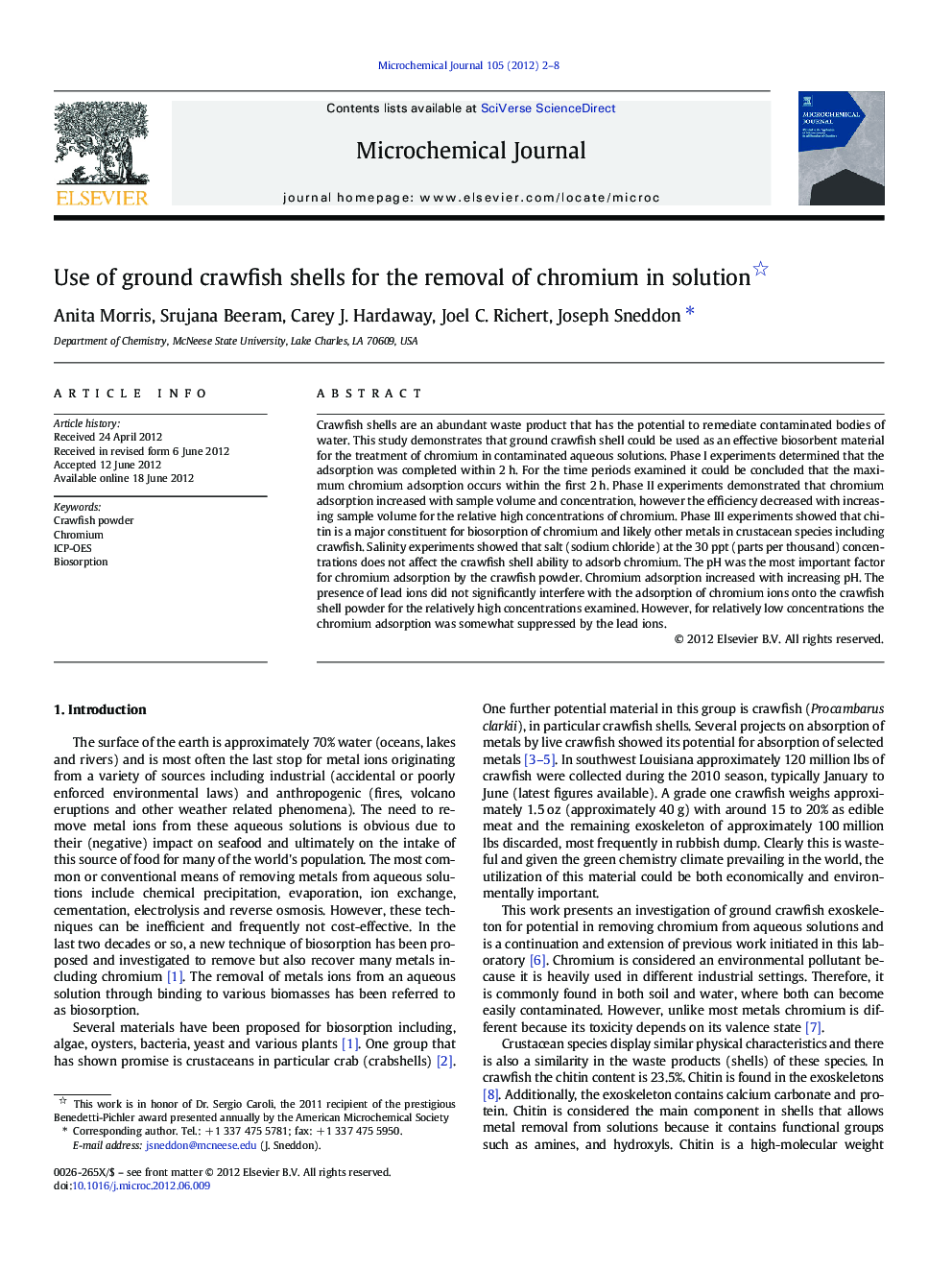| Article ID | Journal | Published Year | Pages | File Type |
|---|---|---|---|---|
| 1227885 | Microchemical Journal | 2012 | 7 Pages |
Crawfish shells are an abundant waste product that has the potential to remediate contaminated bodies of water. This study demonstrates that ground crawfish shell could be used as an effective biosorbent material for the treatment of chromium in contaminated aqueous solutions. Phase I experiments determined that the adsorption was completed within 2 h. For the time periods examined it could be concluded that the maximum chromium adsorption occurs within the first 2 h. Phase II experiments demonstrated that chromium adsorption increased with sample volume and concentration, however the efficiency decreased with increasing sample volume for the relative high concentrations of chromium. Phase III experiments showed that chitin is a major constituent for biosorption of chromium and likely other metals in crustacean species including crawfish. Salinity experiments showed that salt (sodium chloride) at the 30 ppt (parts per thousand) concentrations does not affect the crawfish shell ability to adsorb chromium. The pH was the most important factor for chromium adsorption by the crawfish powder. Chromium adsorption increased with increasing pH. The presence of lead ions did not significantly interfere with the adsorption of chromium ions onto the crawfish shell powder for the relatively high concentrations examined. However, for relatively low concentrations the chromium adsorption was somewhat suppressed by the lead ions.
► Use of crawfish shells for biosorption ► Uptake of chromium in solution in less than 2 h ► pH affected uptake. ► Salt at ppt and lead ions had no effect on uptake.
